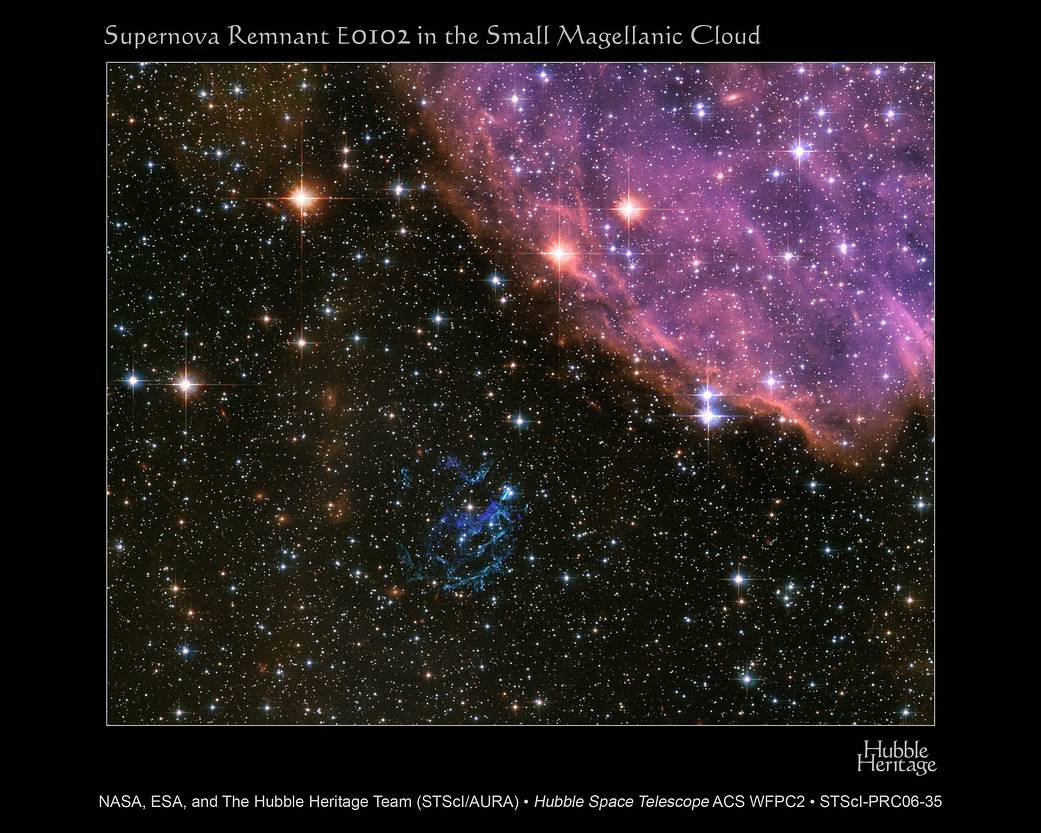Reminiscent of a fireworks celebration, this Hubble Space Telescope image of a cosmic explosion that is quite similar to fireworks on Earth. In the upper right corner of the image, the Small Magellanic Cloud is a delicate glowing structure ablaze in a multitude of lavenders and peach. Nearby, a massive star has exploded as a supernova and begun to dissipate its interior into a spectacular display of colorful filaments.
The supernova remnant known as “E0102” is the greenish-blue shell of debris just below the center of the Hubble image. Its name is derived from its cataloged placement (or coordinates) in the celestial sphere. More formally known as 1E0102.2-7219, it is located almost 50 light-years away from the edge of the massive star-forming region, N 76, also known as Henize 1956, in the Small Magellanic Cloud.
Determined to be only about 2,000 years old, young supernova remnants like E0102 allow astronomers to examine material from the cores of massive stars directly. This in turn gives insight on how stars form, their composition and the chemical enrichment of the surrounding area. As well, young remnants are a great learning tool to better understand the physics of supernova explosions.
The Small Magellanic Cloud is a nearby dwarf galaxy to our own Milky Way. It is visible in the Southern Hemisphere, in the direction of the constellation Tucana, and lies roughly 210,000 light-years distant.Image Credit: NASA, ESA, and the Hubble Heritage Team (STScI/AURA)/J. Green (University of Colorado, Boulder)
2 min read





























